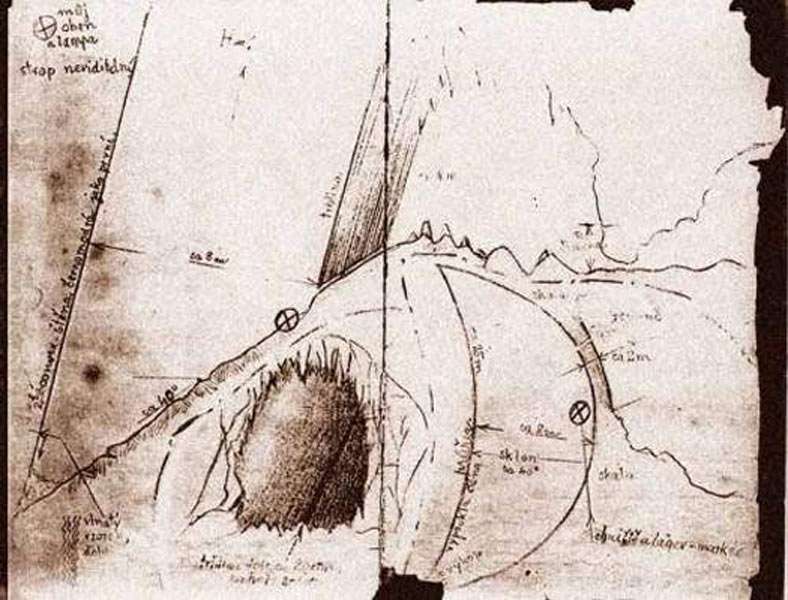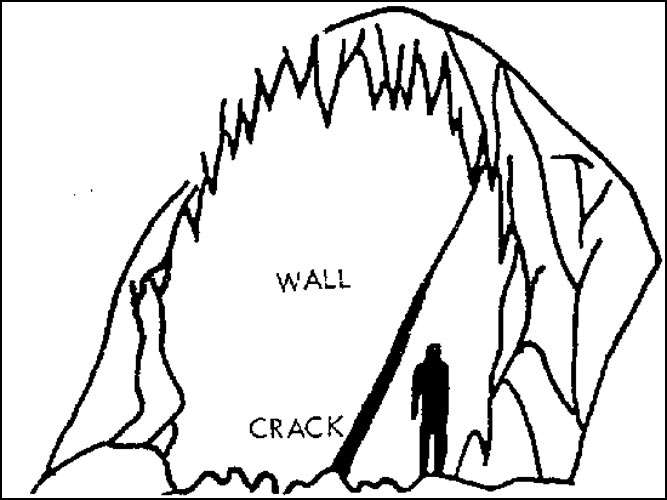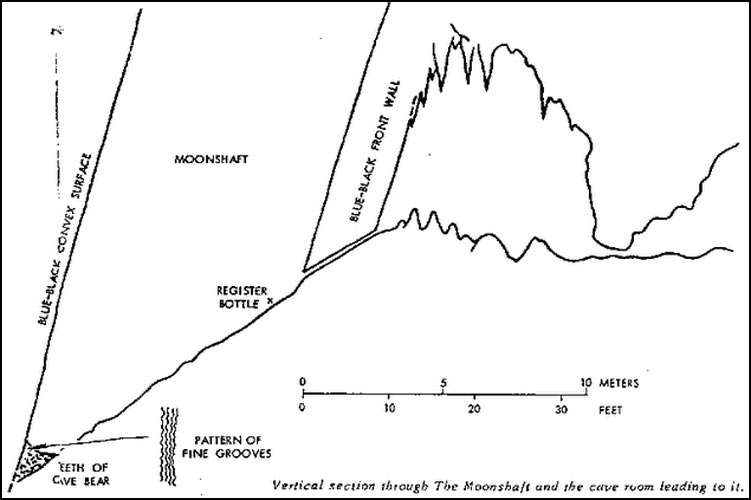
back to House of the Sun index

This article is also available in PDF format.
|
The Moonshaft by Antonin T. Horak
Saturday afternoon the remnants of our battalion (184 men and officers, a quarter wounded, 16 stretcher cases) were retreating through the snow of the north slope. My company was the rear guard. At dawn Sunday, the two 70 mm guns opened up at us from close range - about 300 m. Having held our position for 12 hours, I ordered a gradual breakup of the skirmish and slip-off. But in our left trench someone became careless, and that drew 2 direct hits - shells, two wounded. Arriving there I bumped into the enemy, caught a bayonet and bullet with my left palm and blow on my head, which put me out. Without my fur cap it might be fractured. I came to when someone was pulling me from the trench, a tall peasant. He packed snow on my hand, and grinned. Then this rough and ready Samaritan grabbed Jurek, stripped off his pants, yanked the long sliver of steel from his thigh, and planted him bare-bottomed and gasping into a heap of snow. Martin, with a slash across and into his belly was tenderly bandaged. Building a stretcher the peasant introduced himself as Slavek, a sheepman, owner of the pastures hereabouts. With Slavek hauling and guiding, it took us four hours to reach this cranny. Slavek moved rocks in the cranny and opened a cleft, the entrance to this roomy grotto. Placing Martin in the niche, we were astonished to see Slavek become ceremonious: he crossed himself, each of us, the grotto, and, with a deep bow, its back wall, where a hole came to my attention. About to leave us, Slavek went through the same holy rites, and begged me not to go further into his cave. I accompanied him to fetch pine boughs, and he told me that only once, with his father and grandfather, had he been in this cave; that it is a huge maze, full of pits which they never wanted to fathom, pockets of poisonous air, and "certainly haunted". I was back in the grotto with my men at about midnight, exhausted, head very painful, soothed it with snow. Martin was unconscious, Jurek feverish. For breakfast-lunch-dinner he and I had hot water, and, thank God, I had my pipe. I placed warm stones around Martin, and Jurek got the first watch. Miserable night. Martin at time conscious; I gave him 3 aspirins and hot water to sip with drops of Slivovitz. Jurek hobbled hungrily around the two German helmets in which he boiled water to which I added 10 drops of Slivovitz, our breakfast. With this deluge of snow, avalanches imminent, and enemy skiers roaming, Slavek may not be able to get through to us with food for days to come. And neither should I try hunting and track up the landscape while I have two immobilized men on my hands. But here we have this cave which Slavek knows only partially; it may have more than this known entrance, and it may contain hibernating animals. These possibilities I mulled over while Jurek was chewing pine bark, and, as expected, he implored me to go poaching into Slavek's cave and promised to keep mum. And I was not only starved but equally eager to find out what makes self assured Slavek scared enough to invoke the Deities. I started my cave tour with rifle, lantern, torches, pick. After a not too devious nor dangerous walk and some squeezings, always taking the easiest and marking side passages, I came, after about 1 1/2 hours, into a long, level passage, and its end upon a barrel-sized hole. Crawling through and still kneeling, I froze in amazement - there stands something like a large, black silo, framed in white. Regaining breath I thought that this is a bizarre, natural wall or curtain of black salt, or ice, or lava. But I became perplexed, then awestruck when I saw it is a glass-smooth flank of seemingly man-made structure which reaches into the rocks on all sides. Beautifully, cylindrically curved it indicates a huge body with a diameter of about 25 meters. Where this structure and the rocks meet, large stalagmites and stalactites form that glittering white frame. The wall is uniformly blue-blackish, its material seems to combine properties of steel, flint, rubber - the pick made no marks and bounced off vigorously. Even the thought of a tower-sized artifact; embedded in rock in the middle of an obscure mountain, in a wild region where not even legend knows about ruins, mining, industry; overgrown with age-old cave deposits, is bewildering - the fact is appalling. |

Page of Horak's diary

|
Not
immediately discernible, a crack in the wall appears from below, about
20 to 25 cm wide, tapers off and disappears into the cave's ceiling, 2
to 5 cm wide. Its insides, right and left are pitch black and have fist
sized, sharp valleys and crests. The crack's bottom is rather smooth
trough of yellow limestone, and drops very steeply (about 60 degrees)
into the wall. I threw a lighted torch through; it fell and extinguished
with loud cracklings and hissings as if a white hot plougshare were
dropped into a bucket.
|

|
All the lights together did not reach the ceiling or where these walls
end or meet. The horizontal distance between the apexes of the concave
backside of the front wall and the convex back wall is about 25 meters.
To explore further I needed more light and my pick, which does not fit
through the crack and must be taken apart. |

|
I am a sober, academically trained person but must admit that here,
between these blacks, satiny, mathematically-curved cliffs I do feel as
if in the grip of an exceedingly strange and grim power. I can
understand that simple but intelligent and practical men like Slavek and
his forebears sense here witchery, conceal it, ever made known, it would
attract armies of tourists, and commercialization which would probably
ruin their nature-bound trade and honest life. If and when I came back
it will be with a team of secrecy-bound experts: geologist,
metallurgist, cave expert; and if the object is of true importance for
the advancement of knowledge and proper civilization, will to have to be
found to respect the Slavek`s interests. |
|
Did anyone tried to investigate this story and locate this Moonshaft after the second World War? On The Wealthy Adventurer's University, Mike Collins writes: Whilst investigating this story I made contact with an Archeological Geologist based in the US, after reviewing information which I had sent to him, he emailed me with an astounding statement. He believed the structure was between 300 and 310 million years old! This story was indeed becoming stranger by the hour, I also discovered some otherwise unknown facts. For instance, it is a matter of record that Heinrich Himmler had sent several scientific expeditions into the Tatra’s looking for a legendary “Moonshaft” and that in the middle to late 70’s after Antonin’s (Tony’s) death, members of his family had been approached by the KGB with a view to obtaining the diary. Neither of these ventures was successful. In the 60’s a man by the name of Ted Phillips was introduced to Tony and was fascinated by the story, an expedition was put together but was hastily canceled when the Russians invaded Czechoslovakia in 1968. If this moonshaft is really that old, that means that humans (Homo sapiens) did not built it, because humans are only about two millions years old. |